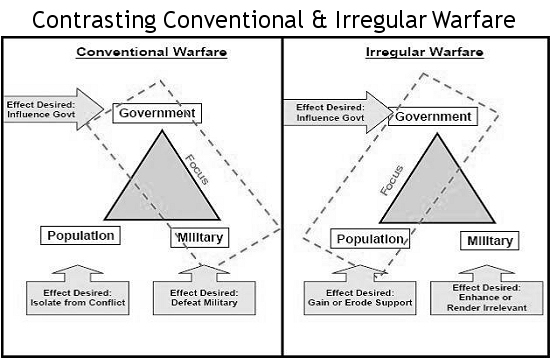Introduction
The Asymmetrical War mental model refers to a situation where two opposing parties possess unequal resources, power, or strategies. This model is highly relevant in decision-making processes, as it highlights the importance of understanding power dynamics, recognizing biases, and making informed choices. Anchored in human psychology, the Asymmetrical War mentality can influence our day-to-day lives, impacting personal decisions, business strategies, and public policy-making. In this blog post, we will delve into the concept of the Asymmetrical War, explore its occurrence in various contexts, analyze the mental biases that contribute to it, provide practical advice on identifying and avoiding this fallacy, and underscore the significance of awareness and active avoidance of this mental trap.
Understanding the Asymmetrical War
The Asymmetrical War mental model encapsulates situations where one party holds a significant advantage over another, resulting in an uneven balance of power. This imbalance can manifest in different forms, such as resources, knowledge, influence, or capabilities. In decision-making processes, the Asymmetrical War mindset arises when individuals or groups fail to recognize or adequately address these power imbalances, leading to irrational choices and unfavorable outcomes.
Psychological Anchoring of the Asymmetrical War
The Asymmetrical War mentality is deeply rooted in human psychology and is influenced by several cognitive biases. One of these biases is the availability heuristic, which leads individuals to rely on readily available information when making decisions. In the context of the Asymmetrical War, this bias can cause individuals to underestimate or overlook the advantages held by the opposing party, leading to a skewed perception of the situation.
Another contributing factor is the confirmation bias, where individuals seek and prioritize information that aligns with their preexisting beliefs or desires. In an Asymmetrical War scenario, this bias can result in the underestimation of risks and overconfidence in the face of formidable opponents. Consequently, individuals or groups may make decisions based on incomplete or biased information, leading to detrimental outcomes.
Examples of the Asymmetrical War in Decision-Making
Personal Life Decisions:
Imagine an individual facing a legal battle against a well-funded corporation. In this situation, the corporation’s vast resources and legal expertise create an asymmetrical power dynamic. If the individual fails to recognize and address this power imbalance, they may make irrational decisions, such as pursuing litigation without adequate preparation or settling for unfavorable terms, ultimately compromising their best interests.
Business Scenarios:
Consider a small startup competing against an industry giant. The startup may possess innovative ideas and agility, while the industry giant has vast financial resources and an established market presence. If the startup underestimates the resources and influence of the industry giant, they may make strategic mistakes, such as entering into a direct confrontation rather than leveraging their unique strengths or exploring niche markets.
Public Policy-Making:
In the realm of public policy, an Asymmetrical War can arise when interest groups with significant financial or lobbying power exert disproportionate influence over decision-making processes. If policymakers fail to recognize the power dynamics at play and succumb to the pressure of influential groups, public policies may be shaped in ways that do not align with the best interests of the general population.
Mental Biases and Underpinnings
The Asymmetrical War mentality is intertwined with various cognitive biases. The overconfidence bias, for instance, can cause individuals to overestimate their own abilities or the likelihood of success, even in the face of overwhelming evidence to the contrary. This bias can blind individuals to the true power imbalance and lead them to make decisions based on unwarranted optimism.
Additionally, the anchoring bias can influence decision-making by causing individuals to rely heavily on initial information or impressions. This bias can prevent individuals from reassessing the power dynamics and adjusting their strategies accordingly, as they remain anchored to their initial perceptions.
Avoiding the Asymmetrical War Fallacy
Recognize Power Dynamics: Begin by acknowledging and understanding the existing power imbalances. Conduct a thorough analysis of the resources, capabilities, and influence held by all parties involved. Avoid underestimating the advantages possessed by the opposing party.
Seek Diverse Perspectives: Actively seek out diverse viewpoints and engage in critical thinking. Surround yourself with individuals who can provide alternative insights and challenge your assumptions. This helps in broadening your understanding of the situation and identifying potential blind spots.
Embrace Collaboration and Partnerships: Look for opportunities to collaborate or form strategic partnerships that can level the playing field. By combining resources, knowledge, and capabilities, you can enhance your position and create a more balanced dynamic.
Continual Evaluation and Adaptation: Regularly reassess the power dynamics and adjust your strategies accordingly. Be open to changing course if necessary and embrace agility and flexibility in your decision-making process.
Conclusion
The Asymmetrical War mental model is prevalent in decision-making processes, impacting personal, business, and public policy contexts. By understanding the psychological underpinnings of this bias, recognizing its occurrence, and employing practical strategies, individuals can make more informed and objective decisions. Awareness of power dynamics, seeking diverse perspectives, embracing collaboration, and remaining adaptable are key to avoiding the Asymmetrical War fallacy. By actively navigating and avoiding this mental trap, individuals can make decisions that align with their best interests and increase the likelihood of favorable outcomes in the face of asymmetrical challenges.
